As we enter the Advent period, Christmas markets are opening across Germany. A trip to Hamburg, in the north of the country, gave me a chance to learn that most of the city's 13 markets have a traditional feel but there's one in particular with a cheeky twist.
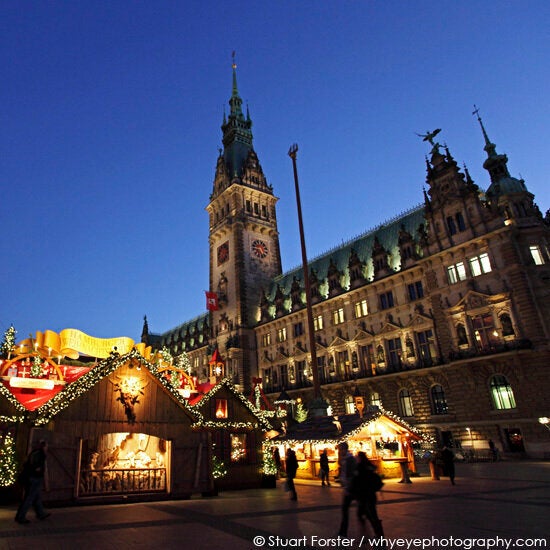
Since the 1990s Germany's Christmas markets have boomed in popularity. People now travel from around the world experience them. Also, in recent years, traders from Germany have been taking the markets abroad, selling their wares at German style Christmas markets in British towns and cities.
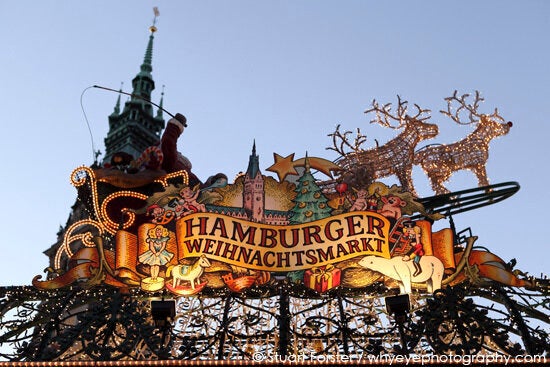
But I wanted to experience the real thing so decided to head to Hamburg, an hour and 40 minutes' flight time from London. The seasonal showpiece is the Roncalli Christmas Market, held on Rathausplatz, the public square in front of the Gothic style town hall. I arrived as dusk was falling. With the sky turning an ever deeper shade of blue the 200,000 fairy lights illuminating the market's wooden stalls made a magical impression. Casual visitors and serious photographers wandered between the huts with smart phones and cameras, clicking shots of the seasonal scenery.

Frau Mombächer, the Roncalli Christmas market's spokesperson, greeted me at the market's main gate. She pointed to Santa Claus's sled being pulled by reindeers above a sign announcing the market's name. It sits on top of a wrought iron portal adorned by 20,000 lights. The concept for this market was the brainchild of Bernhard Paul, director of the Roncalli Circus.
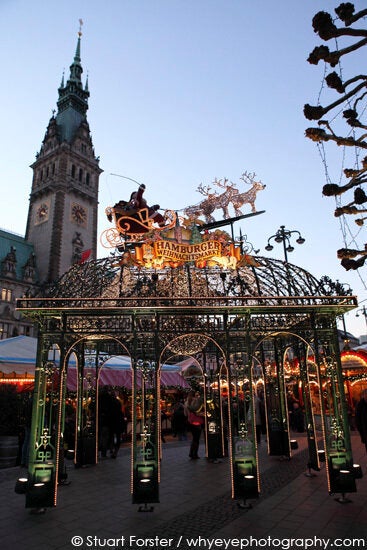
The market has four main lanes, named after the goods sold at the stalls within them. In the Spielzeuggasse, for example, you'll find toys. As I weaved through the crowd, trying to keep up with Frau Mombächer's nimble side stepping, the aroma of grilling sausage and the clove and cinnamon-infused scent of mulling wine teased my olfactory senses.
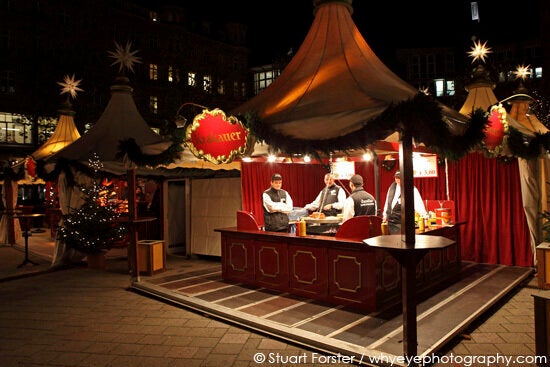
It's easy to understand why Christmas markets are so popular with locals when such a scent reaches your nostrils. People meet for a bite to eat or something to drink with friends and colleagues after work; they're by no means just for tourists or shopping.

"We get around three million visitors a year. Most are from Hamburg but some come from afar afield as New Zealand, Australia and Japan," explained Frau Mombächer. We stood by a carousel on which miniature, early 20th century vehicles were rotating, ridden by smiling, laughing toddlers.
A peek inside of the elegant Wiener Kaffeehaus (meaning 'Vienna Coffee House'), a tent with hanging lamps and stained glass windows revealed people chatting over cake and coffee.
The market has a strict no plastic policy. All of the wares on sale are produced by craftsmen. The majority come from around Germany, fabricating colourful candles, glass candle holders and wooden Christmas decorations. I also spotted a silver jewellery stall from Israel.

The market at the town hall square is not the oldest in the city. That distinction is held by the stalls set out on the streets around the redbrick, Gothic style St Petri Church. The church was established back in the Middle Ages, destroyed in Hamburg's Great Fire of 1842 but re-dedicated in 1849. Unlike many of central Hamburg's buildings, the church survived World War Two with only minor damage. The wooden huts at street level are rustic and decked with pine-scented greenery from fir trees.
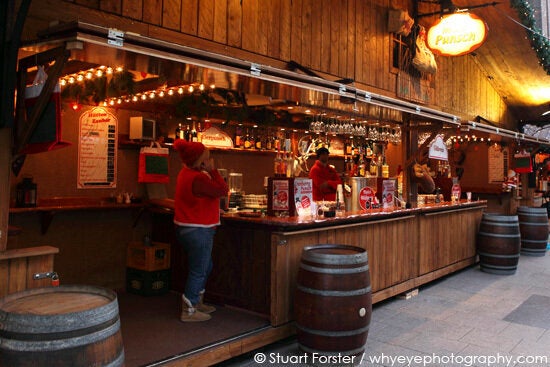
Arguably the most understated and familiar of the city's central Christmas markets is set out on the cobbles of Gerhart-Hauptmann-Platz. I noticed stalls selling chocolate covered fruit, gingerbread hearts and sausages being cooked on hanging metal grills. I ordered a cup of Glühwein mit Schuss (mulled wine with a tot of rum) to warm me and found a cosy corner on a wooden bench. From there I looked on as locals chatted, soaking up the laid-back atmosphere.
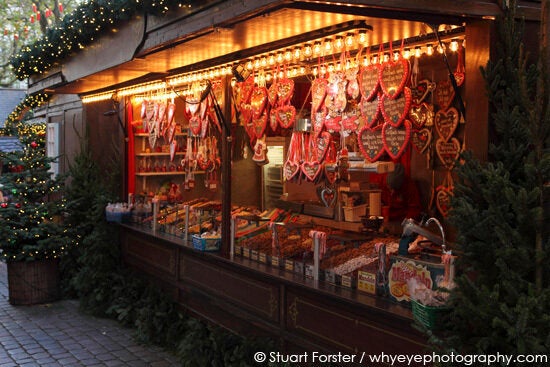
The mood of the Santa Pauli, a Christmas market for over 18 year olds only, is far cheekier. The stalls on Spielbudenplatz in St Pauli, once an infamous red light district, sell items including pubic toupees (made from human hair), intimate piercings and vibrators. There's a tent in which porn karaoke takes place; guests are invited to provide voice over soundtracks to adult films. Strip and burlesque shows are held on stage every half hour.
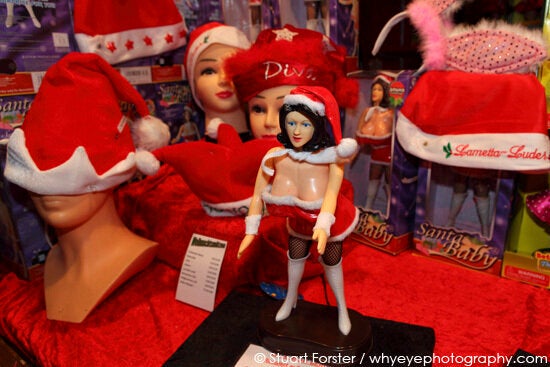
Yet the tone of Santa Pauli is tongue-in-cheek rather than explicit. Outside the public square is covered with wood chippings, creating a fresh pine scent and soft surface on which to walk. Live music is performed on the Spielbudenplatz's permanent stage areas, making this a popular area to meet ahead of heading to the bars and clubs of St Pauli.
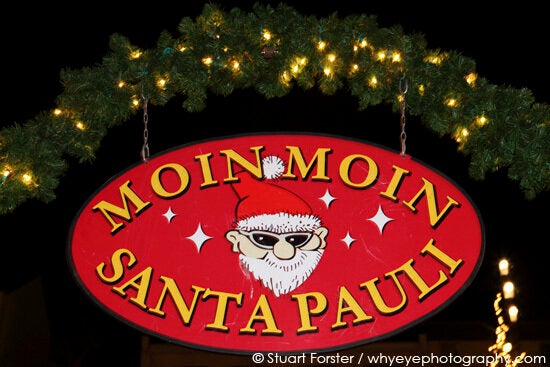
What better way to start a night out than a last Glühwein mit Schuss at a Christmas market?
More Information
Stuart stayed at the 4-star Hotel Barceló, a contemporary, centrally located design hotel with rooms from €115 (£96) per night.
Find out more about Hamburg on the city's tourism information website.
Search Germany's national tourism website for information on Christmas markets around the country.
Read more of Stuart's food and travel features on his personal blog, go-eat-do.com.
